Looking to Amp Up Your Lacrosse Game This Season. Learn How the Right Stick Can Take You to the Next LevelLooking to Amp Up Your Lacrosse Game This Season. Learn How the Right Stick Can Take You to the Next Level
Intro – The importance of having the right lacrosse stick.
Having the proper lacrosse stick is essential for maximizing your performance on the field. The right stick provides optimal ball control, quick release, and pinpoint accuracy to elevate your game. As lacrosse continues to grow rapidly in popularity, manufacturers are engineering advanced stick technology and a multitude of options to meet the needs of players at every position and skill level.
When selecting a new stick, it’s important to consider the type of head, shaft material, flex, weight, and stringing that suits your playing style. Attack players benefit from quick-release heads with narrower scoops for excellent ball retention. Midfielders need a balance of hold and release ability to take face-offs and transition up and down the field. Defense relies on wider heads with great ball protection during checks and disruptions. Goalies choose oversized heads for unparalleled stopping power.
In addition to head type, shaft construction greatly impacts feel and control. Alloy shafts provide durability at a lower price point while composite materials offer an optimal strength-to-weight ratio. For younger players, more flexible shafts help generate whip on passes and shots before they develop full swing strength. Heavier shafts lend added torque for older players with more power. Professionally strung pockets let you hone in the ideal hold, release, and ball sit according to position.
When armed with the insider knowledge on today’s lacrosse stick technologies, you can determine the ideal specifications for your playing style. An attack may prefer a 10-degree titanium shaft with soft mesh and a narrow head for unreal quickness. A dominant midfielder would benefit from a composite shaft with mid-range flex paired with a medium sized head with custom stringing to win draws. Defense relies on softer flex, wider heads with great ball retention, and traditional leather and nylon stringing.
Lacrosse Head Types – Brief overview of attack, midfield, defense and goalie heads.

Lacrosse heads come in a variety of shapes and sizes designed for specific positions on the field. Attack players choose more narrow heads for excellent ball control and quick stick work in tight spaces. Wider heads with extended scoops lend to superb ground ball pickups for midfielders. Defenders need wider heads with maximum ball retention during checks. Massive heads with exaggerated bottom rails improve goalies’ stopping power.
Attack Heads – Features to look for in an attack head.
For attack players, ball control and fast release are paramount. More narrowly shaped heads with defined sidewalls give precision passing, catching, and shooting. Attack heads also have narrower scoops for improved accuracy. Other aspects like offset heads, elongated throat area, and pinched head shapes all cater toward optimizing quick stick work in tight spaces.
Midfield Heads – What makes a good midfield head.
Midfielders need versatility to take face-offs, scrap for ground balls, and push transition. Medium-width heads balance ball control with ground ball capabilities. Wider scoops and optimal offset helps midfielders get low for tough ground balls. These heads also give accuracy on shots after winning draws and breaking through defenders. Mesh and hybrid stringing caters to ground balls while providing hold.
Defense Heads – Must-have traits for a solid defense head.

For defenders, checks, positioning, and ground balls are vital. This requires wider heads with maximum ball retention. These heads have exaggerated sidewalls and defined scoops to maintain possession after poke checks. Wider top rails increase hold during checks. Defensive heads also have wider bottoms for ground ball control and initiating clears.
Goalie Heads – Key factors when selecting a goalie head.
Goalie heads are oversized for maximum stopping power. Heads are extra wide with exaggerated bottom rails to engulf shots. Scoops are pinched for improved ball retention after saves. Heads also have straighter sidewalls and mid-level offset. Large triangular heads provide the most surface area. Mesh pockets improve hold during bounces and blocks.
Lacrosse Shafts – The basics on alloy, composite and titanium shafts.
Today’s lacrosse shafts are made from alloy, composite, or titanium materials. Alloy shafts like aluminum provide durability and stiffness at lower price points. Composites like carbon fiber increase the strength-to-weight ratio for optimal swing speed. Titanium retains alloy durability in a lightweight package. Each offers distinct advantages by position, skill level, and playing style.
Shaft Flex & Weight – How flex and weight impact performance.
When selecting a new stick, several factors come into play:
- Head type
- Shaft material
- Flex
- Weight
- Stringing
Each of these elements plays a crucial role in tailoring the stick to your unique playing style and position on the field.
Decoding Lacrosse Head Types: Attack, Midfield, Defense, and Goalie
Lacrosse heads are not one-size-fits-all. They come in various shapes and sizes, each designed to optimize performance for specific positions. How do these different head types enhance a player’s capabilities?
Attack Heads: Precision and Speed
Attack players thrive on quick stick work and precise ball control. What features should you look for in an attack head?
- Narrow shape for excellent ball control
- Defined sidewalls for precision passing and catching
- Narrower scoops for improved shooting accuracy
- Offset design for enhanced ball retention
- Elongated throat area for quick stick maneuvers
- Pinched head shape for optimal control in tight spaces
These features combine to create a head that excels in quick releases and accurate shots, giving attack players the edge they need in high-pressure situations near the goal.

Midfield Heads: Versatility is Key
Midfielders are the Swiss Army knives of lacrosse, requiring equipment that can handle various tasks. What makes a good midfield head?
- Medium-width design for balanced ball control and ground ball capabilities
- Wider scoops to facilitate ground ball pickups
- Optimal offset for improved low-angle play
- Mesh or hybrid stringing for enhanced ground ball control and ball hold
These characteristics allow midfielders to excel in face-offs, ground ball scrums, and transition play, making them versatile threats across the field.
Defense Heads: Strength and Control
Defenders need heads that can withstand aggressive checks while maintaining ball control. What are the must-have traits for a solid defense head?
- Wider design for maximum ball retention
- Exaggerated sidewalls to maintain possession after poke checks
- Defined scoops for improved ground ball control
- Wider top rails to increase hold during checks
- Broader bottom for enhanced ground ball pickup and clearer initiation
These features combine to create a head that excels in defensive maneuvers, allowing players to disrupt opponent attacks and quickly transition to offense.

Goalie Heads: Maximum Stopping Power
Goalie heads are designed with one primary goal in mind: stopping shots. What key factors should be considered when selecting a goalie head?
- Oversized design for maximum shot-stopping surface area
- Extra wide shape with exaggerated bottom rails to engulf shots
- Pinched scoops for improved ball retention after saves
- Straighter sidewalls and mid-level offset for consistent performance
- Large triangular shape to provide the most surface area
- Mesh pockets to improve hold during bounces and blocks
These features work together to give goalies the best possible chance of making saves and maintaining possession after a stop.
The Science of Lacrosse Shafts: Alloy, Composite, and Titanium
The shaft of a lacrosse stick is more than just a handle. It’s a crucial component that affects everything from shot power to stick control. How do different shaft materials impact performance?
Alloy Shafts: Durability and Value
Alloy shafts, typically made from aluminum, offer a balance of durability and affordability. They provide excellent stiffness, which can be beneficial for players who prefer a more rigid feel. These shafts are often favored by beginners and intermediate players due to their resilience and lower cost.

Composite Shafts: Strength and Speed
Composite shafts, usually made from carbon fiber, boast an impressive strength-to-weight ratio. This translates to faster swing speeds without sacrificing durability. Advanced players often prefer composite shafts for their responsive feel and ability to generate powerful shots with less effort.
Titanium Shafts: Lightweight Powerhouses
Titanium shafts offer the best of both worlds: the durability of alloy in a lightweight package. While they tend to be more expensive, many players find the investment worthwhile for the unique combination of strength and reduced weight.
Flex and Weight: Fine-Tuning Your Lacrosse Shaft for Optimal Performance
Beyond material, the flex and weight of a lacrosse shaft play crucial roles in determining its performance characteristics. How do these factors impact your game?
Understanding Shaft Flex
Shaft flex refers to how much the stick bends during play. A shaft’s flex rating indicates the amount of force required to bend it. How does this affect your performance?

- Low flex (more flexible): Ideal for younger players or those still developing strength. It helps generate whip on passes and shots.
- Medium flex: Offers a balance of power and control, suitable for most players.
- High flex (stiffer): Preferred by stronger players who can take advantage of the increased power transfer.
Choosing the right flex can significantly impact your shooting and passing accuracy, as well as your overall control of the stick.
The Impact of Shaft Weight
The weight of your shaft affects everything from your shot speed to your ability to maneuver in tight spaces. How do different weights benefit various playing styles?
- Lighter shafts: Offer increased speed and maneuverability, ideal for attack players and midfielders who need quick stick work.
- Medium-weight shafts: Provide a balance of speed and power, suitable for most positions.
- Heavier shafts: Deliver more power on shots and checks, often preferred by defenders and power shooters.
The right weight for you will depend on your position, playing style, and personal preference.

The Art of Stringing: Customizing Your Lacrosse Stick for Peak Performance
The way a lacrosse head is strung can dramatically affect its performance. Why is proper stringing so crucial for optimal stick control?
Stringing influences several key aspects of stick performance:
- Ball retention
- Release speed
- Shot accuracy
- Feel and control
Different stringing styles and materials can be used to customize these characteristics to suit individual preferences and playing styles.
Mesh vs. Traditional Stringing
The two main types of stringing are mesh and traditional. How do they differ, and what are their respective advantages?
Mesh stringing uses a piece of nylon mesh as the primary pocket material. It offers:
- Consistency in all weather conditions
- Easier maintenance
- Quicker break-in period
Traditional stringing uses a combination of leather and nylon strings. Its benefits include:
- Greater customization options
- Potential for a more precise pocket shape
- Classic feel preferred by some players

The choice between mesh and traditional often comes down to personal preference and playing style.
Customizing Your Pocket
Within each stringing style, there’s room for customization. How can you tailor your pocket to your specific needs?
- Pocket depth: A deeper pocket offers more hold but can slow release, while a shallower pocket provides quicker release but less hold.
- Channel: The path the ball takes from the pocket to the scoop can be adjusted for different release points and shot types.
- Whip: The amount of resistance when releasing the ball can be fine-tuned for different shooting styles.
Experimenting with these factors can help you find the perfect pocket configuration for your game.
Position-Specific Stick Setups: Optimizing Your Equipment for Your Role
Now that we’ve covered the individual components, let’s look at how they come together for each position. What stick setups work best for different roles on the field?
Attack Stick Setup
Attack players need sticks that allow for quick, precise movements and accurate shooting. A typical attack stick might feature:
- Narrow, offset head for excellent ball control
- Lightweight composite or titanium shaft for quick maneuvers
- Medium to high flex for snap on quick releases
- Mesh or hybrid pocket with a mid to low pocket for balance of hold and quick release

Midfield Stick Setup
Midfielders require versatility in their stick setup to handle various responsibilities. A well-rounded midfield stick could include:
- Medium-width head for balanced performance
- Composite shaft with medium flex for all-around play
- Slightly heavier weight for face-off strength
- Mesh pocket with a mid-pocket for versatile performance
Defense Stick Setup
Defenders need sticks that can withstand aggressive play and maintain ball control. An ideal defensive stick might have:
- Wide head with maximum ball retention
- Durable alloy or strong composite shaft
- Longer length (up to 72 inches for long-pole defenders)
- Stiffer flex for powerful checks
- Traditional or mesh pocket with emphasis on hold
Goalie Stick Setup
Goalies require specialized equipment to maximize their shot-stopping abilities. A typical goalie stick setup includes:
- Extra-wide, triangular head for maximum stopping surface
- Shorter, sturdy shaft (often 40 inches)
- Stiff flex for solid rebounds
- Deep pocket (often mesh) for secure ball control after saves

Caring for Your Lacrosse Stick: Maintenance Tips for Longevity and Performance
A high-quality lacrosse stick is an investment in your game. How can you ensure it stays in top condition?
Regular Cleaning
Keeping your stick clean is crucial for maintaining its performance. How should you clean your lacrosse stick?
- Rinse with clean water after each use to remove dirt and sweat
- Use a soft brush to gently clean the head and strings
- For deeper cleaning, use mild soap and warm water
- Avoid harsh chemicals that could damage the materials
Proper Storage
How you store your stick when not in use can significantly impact its longevity. What are some best practices for lacrosse stick storage?
- Store in a cool, dry place to prevent warping and material degradation
- Use a stick bag for protection during transport
- Avoid leaving in extreme temperatures, especially in direct sunlight or a hot car
Regular Inspections
Routine checks can help you catch and address issues before they become major problems. What should you look for during these inspections?

- Check for loose or fraying strings
- Inspect the head for cracks or warping
- Examine the shaft for dents or weak spots
- Test the pocket for proper depth and tension
Restringing and Adjustments
Over time, your stick’s strings may stretch or wear out. How often should you restring or adjust your stick?
The frequency of restringing depends on how often you play and the condition of your strings. As a general rule:
- Consider restringing every season for regular players
- Adjust strings as needed to maintain optimal pocket shape
- Replace immediately if you notice significant wear or breakage
Evolving Technology in Lacrosse Stick Design: What’s on the Horizon?
The world of lacrosse equipment is constantly evolving. What emerging technologies and trends are shaping the future of lacrosse sticks?
Advanced Materials
Manufacturers are continually developing new materials to enhance stick performance. What innovations are we seeing in this area?
- Nano-enhanced composites for increased strength and reduced weight
- Biodegradable plastics for more environmentally friendly heads
- Smart materials that adapt to temperature and playing conditions
Customization Technologies
The future of lacrosse sticks may lie in personalization. How might customization technologies change the game?
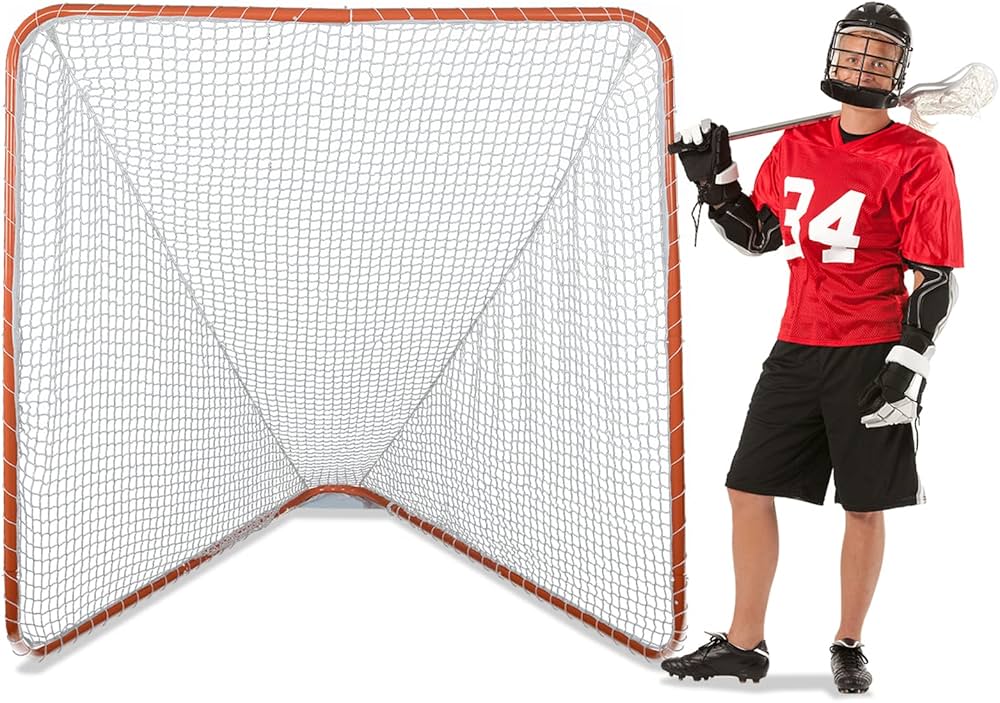
- 3D-printed heads tailored to individual player specifications
- Adjustable flex shafts that can be fine-tuned on the fly
- AI-assisted stringing patterns optimized for each player’s style
Performance Tracking
As sports technology advances, we may see more integration of performance tracking into lacrosse sticks. What could this look like?
- Embedded sensors to measure shot speed and accuracy
- Data collection on stick handling patterns and player movements
- Real-time feedback systems for training and game situations
These emerging technologies have the potential to revolutionize how players choose, use, and interact with their lacrosse sticks, potentially leading to new levels of performance and player development.
Intro – The importance of having the right lacrosse stick.
Having the proper lacrosse stick is essential for maximizing your performance on the field. The right stick provides optimal ball control, quick release, and pinpoint accuracy to elevate your game. As lacrosse continues to grow rapidly in popularity, manufacturers are engineering advanced stick technology and a multitude of options to meet the needs of players at every position and skill level.
When selecting a new stick, it’s important to consider the type of head, shaft material, flex, weight, and stringing that suits your playing style. Attack players benefit from quick-release heads with narrower scoops for excellent ball retention. Midfielders need a balance of hold and release ability to take face-offs and transition up and down the field. Defense relies on wider heads with great ball protection during checks and disruptions. Goalies choose oversized heads for unparalleled stopping power.
In addition to head type, shaft construction greatly impacts feel and control. Alloy shafts provide durability at a lower price point while composite materials offer an optimal strength-to-weight ratio. For younger players, more flexible shafts help generate whip on passes and shots before they develop full swing strength. Heavier shafts lend added torque for older players with more power. Professionally strung pockets let you hone in the ideal hold, release, and ball sit according to position.
When armed with the insider knowledge on today’s lacrosse stick technologies, you can determine the ideal specifications for your playing style. An attack may prefer a 10-degree titanium shaft with soft mesh and a narrow head for unreal quickness. A dominant midfielder would benefit from a composite shaft with mid-range flex paired with a medium sized head with custom stringing to win draws. Defense relies on softer flex, wider heads with great ball retention, and traditional leather and nylon stringing.
Lacrosse Head Types – Brief overview of attack, midfield, defense and goalie heads.

Lacrosse heads come in a variety of shapes and sizes designed for specific positions on the field. Attack players choose more narrow heads for excellent ball control and quick stick work in tight spaces. Wider heads with extended scoops lend to superb ground ball pickups for midfielders. Defenders need wider heads with maximum ball retention during checks. Massive heads with exaggerated bottom rails improve goalies’ stopping power.
Attack Heads – Features to look for in an attack head.
For attack players, ball control and fast release are paramount. More narrowly shaped heads with defined sidewalls give precision passing, catching, and shooting. Attack heads also have narrower scoops for improved accuracy. Other aspects like offset heads, elongated throat area, and pinched head shapes all cater toward optimizing quick stick work in tight spaces.
Midfield Heads – What makes a good midfield head.
Midfielders need versatility to take face-offs, scrap for ground balls, and push transition. Medium-width heads balance ball control with ground ball capabilities. Wider scoops and optimal offset helps midfielders get low for tough ground balls. These heads also give accuracy on shots after winning draws and breaking through defenders. Mesh and hybrid stringing caters to ground balls while providing hold.
Defense Heads – Must-have traits for a solid defense head.

For defenders, checks, positioning, and ground balls are vital. This requires wider heads with maximum ball retention. These heads have exaggerated sidewalls and defined scoops to maintain possession after poke checks. Wider top rails increase hold during checks. Defensive heads also have wider bottoms for ground ball control and initiating clears.
Goalie Heads – Key factors when selecting a goalie head.
Goalie heads are oversized for maximum stopping power. Heads are extra wide with exaggerated bottom rails to engulf shots. Scoops are pinched for improved ball retention after saves. Heads also have straighter sidewalls and mid-level offset. Large triangular heads provide the most surface area. Mesh pockets improve hold during bounces and blocks.
Lacrosse Shafts – The basics on alloy, composite and titanium shafts.
Today’s lacrosse shafts are made from alloy, composite, or titanium materials. Alloy shafts like aluminum provide durability and stiffness at lower price points. Composites like carbon fiber increase the strength-to-weight ratio for optimal swing speed. Titanium retains alloy durability in a lightweight package. Each offers distinct advantages by position, skill level, and playing style.
Shaft Flex & Weight – How flex and weight impact performance.
A shaft’s flex rating indicates how much it will bend before releasing energy. For younger players with less swing strength, more flexible shafts generate whip on passes and shots. As players get older, stiffer shafts provide more torque and hold up over time. Weight ranges cater to players’ strength – lighter for finesse, heavier for powerful dodges and checks.
Pocket Style – Discussion on traditional, mesh, and custom stringing.
Proper stringing ensures optimal ball control, hold, and release. Traditional leathers and nylons provide a classic feel with balanced control. Synthetic meshes increase hold, especially for ground balls. Custom stringing like hybrids combines leathers and meshes to create a defined channel and pocket. Advanced players often customize stringing based on position.
Stick Length – Proper sizing for maximum control.
Longer sticks provide defensive range for poke checks and blocks. Shorter sticks offer quick handling and tight stick work, especially in crease situations. The optimal length comes down to player height and position. General guidelines are: attack/middie – shaft reaches between chin and mouth area on cleats. Defense – reaches between adam’s apple and chin. Goalie – reaches between nose and eyes.
Stick Brands – Overview of top brands like Maverik, STX, Warrior.

Today’s top lacrosse brands engineer sticks for every level of play. Maverik provides an excellent balance of technology and value across positions. STX specializes in field sticks for beginner to elite players. Warrior makes elite level sticks along with protective gear. Brand selection depends on your budget, skill level, and what positions you play.
Budget vs Premium Sticks – Comparison of lower cost vs high end sticks.
Budget lacrosse sticks under $50 sacrifice durability but allow new players to get started. Intermediate sticks from $50-$150 optimize value. Premium sticks over $200 feature cutting edge materials and tech for elite level performance. With proper care and maintenance, more expensive sticks also last longer term.
Stick Maintenance – Keeping your stick in top playing condition.
With practice and games, sticks get beat up over time. Be sure to check for cracks along the frame. Re-string pockets once mesh bags out or leathers stretch. Use manufacturers’ warranties for defects. Wipe down sticks after wet weather. Hang sticks to air dry to prevent warping. Regularly clean shaft with rubbing alcohol to increase traction.
Finding the Right Stick – Putting it all together to choose the ideal stick.

Choosing your next lacrosse stick starts with identifying the right specs for your position, skill level, and budget. Focus on quick release attack heads, versatile midfield heads, wider defensive heads, and oversized goalie heads. Factor in shaft material, flex, and weight. Consider stringing based on hold and ground ball needs. With the knowledge covered here, you can determine the optimal stick to unleash your full potential.
Transform Your Game – Conclusion on how the right stick can elevate your play.
As you gain experience, continue updating your gear to match your evolving style and physical strength. Work your way up to specialized heads with advanced offset and defined sidewall geometries. Upgrade to elite composites or ultra light titanium shafts. Get custom stringing dialed into your exact preferences. With the right stick tailored to your game, you gain the confidence and control to take your play to the next level.
Lacrosse Head Types – Brief overview of attack, midfield, defense and goalie heads.
When selecting a lacrosse head, you need one tailored to your position on the field. Attack, midfield, defense, and goalie each require heads with specialized features to optimize their unique roles.
For attack players, ball control and quick release are paramount. More narrowly shaped heads allow precision passing, catching, and shooting in traffic. Offset heads and elongated throats cater to tight stick work. Attack scoops are narrowed for accuracy.
Midfielders need versatility to take face-offs, scoop ground balls, and drive transition. Medium width heads balance control with ground ball capabilities. Optimal offset and wide scoops aid ground ball pickups. Hybrid stringing provides hold while allowing ground ball finesse.
Defense is all about stick checks, positioning and athleticism. Wide heads with exaggerated sidewalls increase ball retention during physical play. Defined scoops and wide top rails let defenders maintain possession. Bottoms are widened for ground ball control.
Goalies rely on oversized heads and deep pockets to swallow up shots. Exaggerated bottom rails and pinched scoops engulf balls on saves. Sidewalls are straighter for optimal pocket channel. Triangle shapes maximize surface area coverage.
Attack Heads – Excellent for quick stick work in tight spaces.

For lacrosse attack players, having the right head is crucial to excelling in tight spaces around the crease and goal area. More narrowly shaped lacrosse heads allow for excellent ball control, precise passing and catching, and lightning quick shooting.
Attack heads often utilize offset and elongated throat shapes. This provides extra whip on shots and feeds in traffic. Optimal ball retention coupled with fast release let attack dodge, pass, and shoot in the blink of an eye.
Narrower scoops make for pinpoint accuracy on shots, especially high to low placements. Defined sidewalls give added control along the channel and pocket. These heads lend to quicker rolls back, splitting dodges, and cuts to open space off ball.
Stringing can further customize the quick stick traits. Softer meshes and leathers improve hold while allowing the fast catch-and-shoot ability vital for attack players making plays under pressure.
Midfield Heads – Excellent versatility for faceoffs, transition, and both ends of the field.

For midfielders, the lacrosse head must provide versatility to face off, pick up ground balls, and excel in transition. Medium width heads allow the ball control of attack with added ground ball capabilities.
Many midfield heads utilize wider scoops and optimal offset in the throat area. This facilitates getting low to scoop up ground balls off the draw or around the play. Once secured, midfielders can then drive down the field on fast breaks.
Stringing options are Hybrids of soft mesh and traditional leathers. This provides enhanced hold on faceoffs paired with flexibility to control ground balls. channels and pockets are designed to improve ground ball pickups off odd bounces.
The midfield head’s well-rounded traits allow moving the ball effectively up and down the field. After securing possession, they capitalize on fast break chances.
Defense Heads – Built for stick checks, ground balls, and causing turnovers.
For defensemen, controlling possession via checks, knockdowns and ground balls is paramount. Lacrosse heads provide wide dimensions and superb ball retention to facilitate their physically demanding role.
Heads have exaggerated sidewalls which increase ball control during stick checks. Wide top rails also make it harder for offensive players to dislodge during poke checks or wraps. This leads directly to causing turnovers.
Wider scoops allow defense to maintain possession after checks. Defensive heads also have wider bottoms for picking up ground balls with added width and control.
Stringing focuses on traditional leathers or thicker meshes that increase ball hold. This prevents offensive players from dislodging during physical play.
Proper defensive heads give defensemen the abilities needed to outwork dodges, win ground balls, cause turnovers, and control possessions.
Goalie Heads – Massive dimensions provide optimal stopping power.
For goalies, the lacrosse head is their biggest weapon against shots. Oversized head dimensions allow maximum surface area coverage to stop shots.
Heads are extra wide to engulf shots with the exaggerated bottom rails. This leads to game-changing saves. To retain possession after stops, scoops are pinched for locking down balls on rebounds.
Goalie heads often have straighter sidewall geometries. This forms defined pocket channels and optimal ball sit. Triangle shapes maximize the surface area coverage for stopping shots of all angles.
Stringing uses wider meshes that bag out over time. This allows for superior ball control off of tricky bounces. The deep pocket traps everything that hits the mesh.
Proper goalie head specs give outstanding stopping power. Massive dimensions swallow shots while sidewalls and stringing secure rebounds. Goalies dominate the crease with the right head.
Lacrosse Shafts – Understanding alloy, composite, and titanium materials.

Today’s lacrosse shafts utilize advanced alloy, composite, and titanium materials to optimize weight, strength, and handling. Each provides unique advantages in feel, control, and performance.
Alloy shafts like aluminum are cost effective options with excellent durability. They retain stiffness after checks while having some flex for control. This makes a great choice for high school and youth players.
Composite shafts are engineered using superlight carbon fiber or polymer materials. This allows maximizing the strength-to-weight ratio for increased swing speed and ball velocity.
Titanium shafts provide the best of both worlds – lightness similar to composites but with the rugged durability of alloys. Players get ultra quick handles with a stiff, rugged design.
Shaft Flex & Weight – Optimizing feel and control.
Shaft flex and weight allow tuning handles to your swing technique and strength. Flex indicates bend before releasing energy on shots. Lower flex benefits younger players with less power by adding whip.
As players get older, higher flex ratings help maximize torque and ball speed. Weight ranges from lightweight for quickness around the field to heavier for strong dodges and checks.
Pocket Style – Balancing hold and release.

Stringing pocket configuration directly impacts overall ball control, hold, and release. Players tailor mesh, leathers, and hybrids to their position and style.
Traditional leathers and nylons provide a classic feel with balanced attributes. Synthetic meshes allow for increased ball hold, especially vital on ground balls.
Hybrid stringing blends nylons and leathers with specialized meshes. This creates defined shooting channels and pockets for enhancing feel. Players often customize pockets based on their skills and role on the team.
Stick Length – Properly fitted for optimal control.
Proper lacrosse stick length improves handling, control, and athletic ability. Longer sticks allow superior poking and passing lanes for defensemen. Shorter sticks provide tight handles for offensive dodges and shot power.
For attack and midfield, rules dictate sticks 40-42” or 52-72” from end to end. Defense often uses 52-72” lengths. Goalies maximize their wingspan with extra long sticks.
Ideally, attached shafts should reach between the chin and mouth area. This allows maximum control and quick level changes. Proper sizing tailors to a player’s height and style.
Stick Brands – Key companies making lacrosse sticks.
Today’s top lacrosse brands include Maverik, STX, Warrior based on popularity and innovation. Each provides a range of sticks catering to every level and position.
Maverik engineers an excellent balance of value, performance, and style across their sticks. This makes them popular from youth to elite players.
STX specializes in versatile mid-level sticks with specialized heads for each position. Warrior provides elite level sticks and protective gear worn by Premier college players.
Other brands like Brine, ECD, and Epoch carve out niches with unique styling or pro player endorsements. With all the options, players can access sticks matching their budget and skill sets.
Budget vs Premium Sticks – What you pay for.
Budget sticks under $50 allow beginners to get started at low cost. Yet durability and performance are compromised. Intermediate sticks from $50-$150 optimize value and are ideal for most high school players.
Premium lacrosse sticks over $200 utilize cutting edge materials and engineering for elite performance. Next gen alloys, composites, and stringing cater to specialized play. The high cost also pays for pro-level durability.
Stick Maintenance – Keeping gear in top shape.
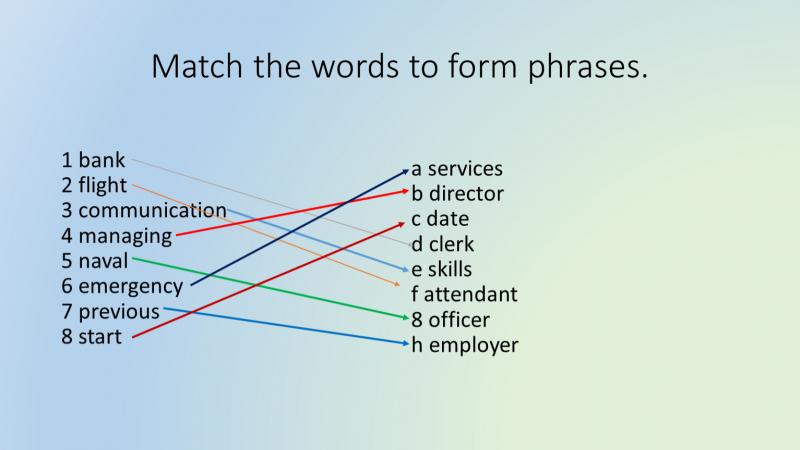
To maintain peak performance, lacrosse sticks need proper care. Inspect for cracks in the head and replace bumped out mesh pockets. Have sticks restrung once leathers stretch. Use warranty coverage for defects.
Wipe sticks down after wet weather to prevent warping. Air dry sticks by hanging to retain shape. Clean shafts regularly with alcohol for better grip and traction.
Choosing the Ideal Stick – Tailoring to your game.
Selecting the optimal lacrosse stick starts with choosing the right head type, shaft, flex, and stringing to match your position and skill level. Consider budget but don’t sacrifice quality and durability. With the right stick, you gain the confidence to elevate your game to the next level.
Attack Heads – Features to look for in an attack head.
If you’re looking to step up your lacrosse game this season, one of the best investments you can make is in a new stick. As an attack player, choosing the right lacrosse head is crucial for improving your offensive skills. The head makes a huge difference in how you handle, pass, catch, and shoot the ball. Let’s explore some of the key features to consider when selecting an attack head.
First and foremost, you’ll want to find a head with excellent ball control and retention. Attack heads are designed to cradle and carry the ball with optimal security, minimizing the risk of dislodging or dropping passes. Look for heads with deeper sidewalls, more defined scoops, and narrower throats. These structural elements help wrap the mesh tightly around the ball for excellent retention. The Alpha Lacrosse head, for example, offers maximum ball control thanks to its angular sidewall design and precision scoop.
In addition to ball control, increased accuracy is a must for attack players. Heads with a stiff sidewall and defined scoop allow you to develop consistent mechanics and placement on your shots. Attack heads with an aggressive angle in the scoop can add velocity for blistering shots on cage. The Alpha Lacrosse head utilizes Vector Scoop technology, an engineered scoop that improves passing and shooting accuracy.
Don’t forget about handling – attack players are constantly dodging, faking, and maneuvering with the ball. Look for an attack head with a smooth, slippery plastic that allows the ball to move freely around the pocket. The Alpha head uses a high-gloss finish that enables quick release passes and fluid ball movement.
While you want excellent ball retention, the head must also facilitate quick passes and shots. Make sure to choose an attack head with an open sidewall designed to release the ball cleanly. Attack heads feature more defined channels and a U or V-shaped throat to provide control while still allowing the ball to come off the pocket crisply. The Alpha head utilizes an open sidewall and PassPortal technology to deliver pinpoint passing accuracy.
In addition to these performance features, don’t overlook aesthetics. Choosing a head style and colorway you love gives you confidence on the field. Alpha Lacrosse heads come in a variety of vibrant, stylish color options to match your personality.
The bottom line is that your lacrosse head determines how you interface with the ball. Investing in a head engineered for optimal ball control, handling, passing, and shooting can make a major difference in your offensive game. Be sure to consider key specifications like scoop angle, sidewall structure, and throat shape when selecting an attack head. With the right head, you’ll enhance your level of play and take your attacking game to new heights.
Choosing the Right Attack Shaft

A great attack head is only half of the equation – you also need an excellent shaft! The shaft is what enables you to handle, cradle, and maneuver the lacrosse stick effectively. Let’s look at some key considerations when picking out an attack shaft.
First, make sure to get the appropriate shaft length based on your height and playing style. Attack shafts generally range from 30 to 32 inches. If you are on the shorter side, go with a 30 inch shaft for optimal control. Taller players can extend their range with a 32 inch shaft.
Next, consider the material. Attack shafts are typically made from lightweight metals like titanium and aluminum alloys. The Alpha Lacrosse shaft utilizes an ultra lightweight titanium alloy for superior strength and durability without excessive weight.
It’s also important to look at the shaft’s flex profile and stiffness. Attack players generally benefit from a more flexible shaft for quick release shots and passes. Make sure to choose a shaft that provides some “give” when cradling but is stiff enough for solid poke checks. The Alpha attack shaft uses FlexZone technology, providing customized flex points for ideal handling.
Grip and handle are also key considerations. Look for attack shafts with a grip that provides secure control when cradling but still allows smooth rotation. The Alpha handle is engineered for ergonomic comfort and great feel.
Like lacrosse heads, shafts also come in a variety of cool colors, prints, and designs. Pick a shaft that matches your gear style and personality on the field.
Your shaft impacts how you carry, pass, catch, and shoot the ball. Investing in the right attack shaft tailored to your game can elevate your level of play. Keep length, weight, flex profile, and grip in mind when choosing an attack shaft.
Putting it All Together
When combined with a complementary head, the right attack shaft becomes an extension of your arm for dominating on offense. That’s why properly pairing your chosen head and shaft is so important.
The Alpha Lacrosse stick combines revolutionary technology in both the head and shaft for unmatched performance. With core features like the Vector Scoop, PassPortal, FlexZone, and SlipTek grip, the Alpha stick provides the complete package for taking your game to the next level.
In addition to optimizing head and shaft performance, a unified setup can maximize your style on the field. Choose an Alpha head and shaft combo in your favorite colorway for a customized, game-ready lacrosse stick.
This season, resolve to transform your attack game with the best gear. The right lacrosse stick can become an invaluable asset that boosts your confidence, control, and scoring capabilities. Do your research, understand key specifications, and invest in a complete setup that enhances your strengths as a player. With the perfect stick in your hands, you’ll be primed to impress on the attack!
Midfield Heads – What makes a good midfield head.

As a lacrosse midfielder, you need a stick that can do it all – and selecting the right head is crucial. A midfield head has to provide versatility for all aspects of the position, from faceoffs to fast breaks. Let’s look at some of the top considerations when picking out a midfield head.
One of the most important factors is durability. As a midfielder, your head takes a beating game after game. Make sure to choose a sturdy head made from high-grade materials like aircraft-grade aluminum alloys. The head should retain its shape and integrity even after relentless contact. Alpha Lacrosse engineers their heads for maximum toughness and durability on the field.
In addition to durability, you need excellent ball control as a midfielder. Whether carrying the ball on clears or distributing in transition, the head must cradle securely. Look for a midfield head with defined sidewalls, a deep pocket, and optimal ball retention. The Alpha head utilizes a uniquely contoured sidewall for unmatched control during play.
Midfield heads must also provide quick release for outlet passes and shots on the run. Although you want solid ball retention, the head can’t hold the ball when you need to pass or shoot. Make sure the head has an open sidewall and throat structure to facilitate smooth, timely releases across the field. Alpha’s PassPortal technology ensures crisp, accurate outlet passes from the midfield.
Don’t neglect ground balls – midfield possession starts with ground ball proficiency. Look for a head with a pronounced scoop or tapered design to dig loose balls out of the dirt. The Alpha midfield head uses a steep Vector Scoop to gain possession off the turf.
In addition to performance, style matters for confident play. Choosing a midfield head in a colorway and design you love adds swagger to your game. Alpha Lacrosse heads come in a wide selection of vibrant styles and color combos.
Your midfield head impacts all aspects of your multifaceted game. Investing in a head engineered for versatility, control, quick release, and ground ball prowess can elevate your midfield play.
Picking the Perfect Midfield Shaft

A midfield shaft needs to optimize your skills as a do-it-all player. Here are some top considerations when selecting a shaft for midfield:
Midfield shafts are typically a bit longer for maximum range. Ideal midfield shaft lengths range from 30 to 32 inches. Match the length to your height and style – longer for range or shorter for tighter control.
The shaft material also matters. Look for ultra lightweight metals like Scandium titanium alloys to minimize fatigue over a game. Alpha Lacrosse uses superior Scandium titanium to remove excess weight from their midfield shafts.
Midfielders need a blend of stiffness and flex in the shaft. Stiffness provides checks and pokes while flex facilitates passing and shooting. The Alpha midfield shaft utilizes FlexZone technology to engineer custom flex points across the shaft length.
An excellent grip is also critical for midfield possession and ball control. The Alpha grip combines tactile ridges and contours for the ultimate in secure-yet-smooth handling during play.
Just like heads, today’s midfield shafts come in amazing colors and graphics. Pick a style that matches your gear aesthetic on the field.
Choosing the right midfield shaft delivers balance, range, flex, and control to elevate every aspect of your game. Keep weight, flex profile, length, and grip in mind as you select your midfield shaft.
The Complete Midfield Package
Pairing the ideal midfield head with an optimized shaft results in next-level performance. That’s the advantage of unified engineering offered by the Alpha lacrosse stick system.
Alpha’s integrated technologies take your game to new heights. The patented Vector Scoop, Contour Control sidewalls, and PassPortal head features combine with the lightweight Scandium shaft, FlexZone technology, and tactile grip for midfield excellence.
In addition to optimized specs, Alpha allows you to customize your style by choosing from a variety of cool color combinations. With Alpha, you’re not just getting a stick – you’re building an extension of yourself on the field.
Don’t settle for average performance from an ordinary stick this season. The right lacrosse stick can transform your possession game, passing skills, transition speed, and midfield IQ. Do your homework on the key technologies and features that cater to your midfield needs. Then complete the package with a shaft designed to balance weight, flex, and handling. With the perfect midfield stick in hand, you’ll expand the possibilities for your athletic potential.
Defense Heads – Must-have traits for a solid defense head.

As a defender, having the right lacrosse head is crucial for lockdown coverage. The head makes all the difference in stick checks, positioning, and takeaways. Let’s explore some key considerations when picking out a defensive lacrosse head.
First, look for superior ball control and retention. You need a head that cradles securely during clears and outlets. Control also allows you to maintain possession when picking off passes. Opt for a head with defined scoops, deep sidewalls, and channels that wrap the ball tightly. The Alpha defensive head utilizes precision contours to wrap the ball for unmatched control.
In addition to control, excellent ground ball capabilities are a must. As a defender, ground ball proficiency starts your transition game. Look for heads with an angular, tapered scoop design to gain possession off bad passes and forced turnovers. The Alpha head uses a steep Vector Scoop optimized for gobbling up ground balls.
Don’t forget about durability. Defensive heads take a constant beating with slashes, pokes, and contact. Choose a head constructed from industrial-grade metals like Scandium titanium alloys. Alpha Lacrosse heads are engineered with premium alloys to retain shape and integrity shift after shift.
While control is key, the head still needs to facilitate quick outlet passes once possession is gained. Look for an open sidewall structure to allow smooth releases for clearing the ball downfield. The Alpha defensive head utilizes PassPortal technology for pinpoint outlet accuracy.
In addition to performance, the aesthetic and style of the head are also important. Pick a head design and colorway that boosts your confidence and intimidation on defense. Alpha offers a variety of vibrant colors and prints to match your swagger.
Choosing the right defensive head delivers the control, ground ball performance, durability, and clearing ability to lock down opponents this season.
Picking the Perfect Defensive Shaft

A solid defensive head needs an equally optimized shaft for peak performance. Here are key factors in picking a defensive lacrosse shaft:
Defensive shafts run a bit longer for maximum range. Look for shaft lengths from 30 to 32 inches based on your height and defensive style. Taller players can benefit from extra length.
Weight is also important in a defensive shaft. Superior lightweight metals like Scandium titanium remove excess heft without compromising durability. Alpha Lacrosse uses premium Scandium titanium alloys to minimize shaft weight.
The flex profile matters – defensive players need more rigidity for poke checks but some flex for scooping ground balls. Look for a shaft with strategically engineered flex points to balance stiffness and flex. Alpha’s FlexZone tech provides optimized flex along the shaft length.
Additionally, the grip and handle need to promote secure control during contact defensive play. The Alpha grip combines ergonomic ridges and tactile contours to anchor the shaft in your hands.
Just like heads, defensive shafts now offer amazing colors and graphics. Pick a style that intimidates opponents and boosts your confidence.
Choosing the right defensive shaft amplifies your physicality, range, and disruptive abilities on defense. Factor in weight, balance, flex profile, and grip as you select a shaft.
The Complete Defensive Package
When paired with an optimized defensive shaft, a high-performance head can transform your defensive prowess. That’s the benefit of a unified lacrosse stick system like Alpha.
Alpha’s integrated technologies take your defensive game to the next level. The Vector Scoop, Contour Control, PassPortal, and Slick Sidewall of the head combine with the lightweight Scandium shaft, FlexZone stiffness, and tactile grip for unmatched capability on defense.
In addition to performance, Alpha allows you to choose from many stylish color combinations to intimidate opponents and look good while locking them down. With Alpha, you’re building an extension of yourself on the defensive end.
Don’t settle for average defense with an outdated stick this season. Invest in a modern lacrosse stick engineered to elevate your physicality, ground ball skills, transition speed, and defensive dominance. Do your research to understand the technologies that meet your needs as a defender. Then complete the package with a shaft designed for poke and hold checks. With the perfect defensive stick in hand, you’ll have the tools to realize your potential as an elite shutdown defender.
Goalie Heads – Key factors when selecting a goalie head.

As a lacrosse goalie, your head is your most important piece of protective equipment. The goalie head impacts your ability to track shots, direct saves, clear the ball, and even intimidate shooters. Let’s look at some vital considerations when picking out a goalie head.
First and foremost, the head needs to be extremely stiff and durable. Goalie heads take a constant beating from high-velocity shots every game. Choose a head constructed from premium alloys like aerospace-grade titanium to retain shape despite heavy contact. Alpha Lacrosse engineers goalie heads to withstand seasons of extreme punishment.
In addition to durability, excellent ball control and retention are must-haves. Your ability to clear and outlet pass depends on cradling and controlling saves. Look for a curved head shape with defined sidewalls to wrap the ball securely. The Alpha goalie head shape is optimized for unmatched ball control.
Don’t neglect ground ball capabilities. Controlling loose ball rebounds equates to extra possessions. Choose a goalie head with a pronounced lip or tapered scoop design to dig out ground balls around the crease. The Alpha goalie scoop grabs ground balls with authority.
While ball control is key, you also need quick ball releases when outlets and clears are available. Make sure to pick a head with an open sidewall structure to facilitate smooth, fast passing downfield. Alpha’s PassPortal tech ensures pinpoint outlet accuracy from the goalie position.
In addition to function, style and intimidation factor are also important. Choose a cool goalie head design and colorway that you love to boost confidence between the pipes. Alpha offers a wide selection of graphics and colors to match your goalie swagger.
Picking the right goalie head enhances your protection, ball control, ground ball abilities, outlet passing, and command of the crease.
Choosing Your Goalie Shaft

Optimizing your goalie head starts with pairing it with an ideal shaft. Here are key considerations when selecting a goalie shaft:
Goalie shafts are longer to maximize your range when cutting off angles. Look for lengths from 40 to 72 inches depending on your height and preference. Taller goalies can go longer.
The shaft material matters – stiffer is better for ball deflection. Aerospace-grade titanium alloys add rigidity without excess weight. Alpha goalie shafts utilize premium alloys for ideal stiffness.
Flex also comes into play – goalie shafts need some “give” to absorb impact on saves while retaining stiffness for batted clears. Alpha’s FlexZone tech provides engineered flex points along the shaft length.
An excellent grip improves ball control and handling. The Alpha goalie shaft features tactile contours and ridges for ultimate security when cradling.
Today’s goalie shafts offer amazing graphics to match your style. Pick a cool design that intimidates shooters.
Choosing the correct goalie shaft amplifies the performance of your head for unrivaled goal line protection.
The Complete Goalie Package
When combined with a matched goalie shaft, your head truly unlocks its potential for goal line dominance. That’s the benefit of a unified goalie stick system like Alpha.
Alpha’s patented technologies work seamlessly together. The curved head shape, Vector scoop, PassPortal, and Slick Sidewall integrate with the extra-stiff shaft, FlexZone stiffness, and tactile grip for next-level performance in goal.
In addition to optimized function, Alpha offers many stylish graphics and colors to intimidate shooters. With Alpha, you’re building an extension of your intimidating presence in net.
Don’t settle for an average goalie stick this season. Invest in technology engineered to boost your protection, control, outlets, leadership, range, and confidence between the pipes. Understand the specs and features that cater to goalies. Then complete the package with a shaft that optimizes deflection and control. With the perfect goalie stick in hand, you’ll be that brick wall that shuts down opponents and leads your team to victory.
Lacrosse Shafts – The basics on alloy, composite and titanium shafts.

The shaft is a key component of any lacrosse stick, impacting your ability to handle, pass, and shoot. When selecting a shaft, one of the most important choices is the material. The three main options are alloy, composite, and titanium shafts. Let’s break down the basics on each material.
Alloy shafts have been popular in lacrosse for years. Most are made from aluminum combined with other metals like magnesium, copper, or zinc. Top alloy choices for shafts include Aircraft 6061 aluminum, Scandium 6000 aluminum, and 7075 aluminum. Alloy shafts offer great strength at an affordable price point.
The main benefits of alloy shafts are durability, stiffness, and cost-effectiveness. The metals used in alloy shafts retain their structural integrity well with minimal dents or bending. Alloy also provides substantial stiffness and rigidity for solid poke checks, passes, and shots. Finally, alloy remains one of the more budget-friendly shaft options.
Potential downsides of alloy shafts include susceptibility to rust and corrosion over time, particularly with use in wet conditions. They can also dent or bend more permanently from heavy impacts. Additionally, alloy shafts tend to be heavier than composites or titanium.
Composite shafts provide another excellent alternative and are growing in lacrosse popularity. Composite shafts are made by embedding carbon fiber, aramid fiber, or fiberglass into a polymer resin matrix. This makes them very lightweight yet strong.
Main advantages of composites are ultra-light weight and vibration dampening. By reducing shaft heft, composites minimize fatigue over the course of a game. Their layered construction also dampens vibrations for improved handling. Composite flex profiles can be tuned by adjusting the direction of the fibers.
Potential composite shaft drawbacks include higher cost and susceptibility to breaking rather than bending or denting. They require more care to prevent cracking or chipping damage. Composites can also lack the stiffness of alloy for aggressive play.
Titanium shafts represent an elite lacrosse shaft option. Pure titanium is extremely strong, ultralight, and corrosion-resistant. Aerospace grade titanium alloys like Scandium Ti-6Al-4V further enhance these properties. Titanium lacrosse shafts provide the pinnacle of performance.
Top benefits of titanium shafts include supreme strength, featherlight weight, and excellent flex properties. Titanium shafts are both stiff and flexible, combining rigid poke checks with smooth shooting. They also resist dents, dings, rust, and weathering incredibly well. Titanium shafts deliver the highest strength-to-weight ratio.
The main drawbacks of titanium shafts are the premium cost and difficulty to manufacture. Pure or aerospace-grade titanium is more expensive, driving up shaft prices. The challenges of machining titanium also restrict production volumes.
When choosing a lacrosse shaft material, consider how you want to balance cost, weight, durability, stiffness, care requirements, and longevity. Alloy provides ruggedness at a moderate cost. Composites minimize weight while requiring more care. Titanium delivers elite performance and resilience at a higher price.
It’s also possible to combine multiple materials in one shaft. Some shafts use a titanium core or titanium layering to take advantage of titanium’s benefits while minimizing cost. Alpha Lacrosse shafts utilize a titanium core encased in an alloy exterior to optimize performance, weight, and durability.
Keep your playing style, shaft dimensions, care practices, and budget in mind as you choose alloy, composite, or titanium for your next lacrosse shaft. Selecting the right shaft material can help take your game to the next level this season!
Shaft Flex & Weight – How flex and weight impact performance.

When selecting a new lacrosse shaft, two key factors are flex profile and weight. Balancing flex and weight in your shaft can make a big difference in your passing, shooting, handling, and poke checking abilities. Let’s take a deeper look at how shaft flex and weight impact performance.
The flex of a shaft refers to how much it will bend and flex during play. Stiffness, rigidity, and flex profile vary across the shaft length depending on the materials used and engineering. Finding the ideal flex balance is important.
For most players, some flex is beneficial to enhance shooting power, passing speed, and overall ball control. Flexible shafts act like a “whip” as you shoot, generating faster shot velocities. They also smooth out passing motions for crisp feeds. Defenders and LSMs do benefit from more rigid shafts for maximum poke check effectiveness.
Engineered flex zones allow tuning stiffness and flex at different points along the shaft. For example, increased flex in the lower-mid shaft combined with more rigidity up top allows great shots alongside solid poke checks in one stick.
Weight is another essential lacrosse shaft characteristic. Excess weight leads to increased fatigue over the course of a game. New materials and engineering approaches allow for ultra-lightweight yet strong shafts.
Reducing shaft weight improves your acceleration, transition speed, and quickness when dodging. Minimal weight also helps minimize fatigue on lengthy possessions or during intense defensive standoffs. Goalies benefit from lightweight shafts when making repeated high-volume saves.
Lightweight shafts do come with durability tradeoffs in some cases. So engineers balance weight savings with strength and stiffness by using alloys, composites, or metals like titanium. New construction methods also remove any unnecessary heft while retaining rigidity.
Balance is key – extremely lightweight shafts can potentially dent, crack, or bend if checks and contact get too intense. Finding the sweet spot for minimal weight without fragility is ideal.
When optimizing flex and weight, also factor in your player position and specialization. Middies benefit from a balance of flex for running through passes upfield and stiffness for two-way play. Attackmen can utilize increased flex for quicker shots on cage. Defensemen prefer more rigidity for physicality and poke checks.
Advanced lacrosse shafts utilize flex zone technology and hollow or cellular construction to provide customized flex points and lightweight profiles. This allows tuning stiffness, rigidity, and weight precisely where needed most along the shaft length.
The bottom line is that flex profile and weight tuning have a big impact on lacrosse shaft performance. Seek out shafts engineered strategically for your ideal balance of flex and lightweight feel based on your position and game. Choosing your lacrosse shaft with flex and weight in mind can help unlock new levels of playmaking ability this season!
Pocket Style – Discussion on traditional, mesh, and custom stringing.
If you’re looking to amp up your lacrosse game this season, you know that having the right stick can make all the difference. While the head and shaft certainly play key roles, don’t underestimate the power of pocket styling. The pocket is where you carry, cradle, and shoot the ball from, so getting it just right for your position and playing style is crucial.
When it comes to lacrosse pockets, you’ve got three main options – traditional leather, synthetic mesh, and custom stringing. Each has its own unique feel and performance attributes. Let’s break down the pros and cons of each.
Traditional Leather Pockets
For old school lacrosse purists, nothing beats the classic feel of a traditionally strung leather pocket. Leather pockets have been used since the early days of the sport and offer a smooth, consistent feel when cradling. The main drawback is that traditional leathers tend to be less adjustable in terms of pocket depth and bagginess.
Leather pockets are anchored using a series of leather shooting strings and cross-lacing. This creates tiers or “diamonds” in the pocket that help grip and channel the ball. While you can tighten or loosen cross-lacing to adjust pocket tension, the overall shape stays fairly consistent.
Traditional leathers work best for players who like a mid-to-low pocket depth and prefer a smooth, consistent feel on cradles and passes. The pocket won’t have as much hold as a deep mesh, but makes for quicker, more effortless releases. This makes traditional leathers a top choice for offensive players looking for quick sticks.
Synthetic Mesh Pockets

Mesh pockets have become popular over the last couple decades thanks to their adjustability and ability to bag out more than traditional leathers. Mesh stringing involves interwoven nylon that creates a web-like pocket. By adjusting various shooters and tie-off points, you can create all kinds of pocket shapes.
Deep mesh pockets with heavy midsection bagging are popular for players who like to clamp down on the ball and carry deep. This gives a little more security for cradling through contact but can reduce quickness on passing and shooting. More mid-range or even shallow mesh pockets offer a better blend of hold and release.
Mesh pockets are popular across all positions, but especially with midfielders and defenders who need to protect the ball on drives and heated clears. The ability to customize hold and throw release points makes mesh a very versatile option.
Custom Stringing
For lacrosse players seeking the most personalized pocket feel, custom stringing is the way to go. Here you or a skilled stringer hand-weaves nylon strings and sidewall cords to create a truly one-of-a-kind pocket.
Custom stringing lets you fine tune every aspect of the pocket – overall depth, sidewall stiffness, shooting strings, channel shape, and more. You can tweak the pocket architecture to achieve precise hold, release, and ball channeling properties. Top players will experiment endlessly to get their pocket dialed in just right.
The sky’s the limit with custom stringing, but it does require time, skill, and trial-and-error. Don’t expect to nail your ideal pocket on the first string. Custom pockets also tend to bag out more over time, so continual tweaks may be needed.
Choosing the Right Pocket for You

When deciding on pocket style, first consider your position and playing style. Close offensive players want faster release pockets that retain control. Midfielders and defenders need stringing that secures the ball under pressure but still enables effective passing and shooting. goalies prefer a lot of hold to smother those tough rebounds.
Your stick skills also play a role. Inexperienced players often benefit from a little more depth and hold to help them control the ball. As you improve your cradling, throwing, and catching abilities, you may opt for shallower pockets for quicker play.
Beyond function, finding the right look and feel is key. Test out pockets that offer the right visual channeling from sidewall to sidewall. Focus on ones that just feel right during cradling, scooping, and passing. Comfort and confidence go a long way!
Don’t be afraid to experiment with different pocket styles each season until you find your go-to. And don’t settle! Keep tweaking and tuning your stringing for even better performance over time. Remember, the stick doesn’t make the player – but having pocket confidence gives you a critical edge.
When paired with the right head and shaft combo, a dialed in pocket can help unlock next-level lacrosse skills. With all the stringing options available today, find your pocket sweet spot and take your game to the top!
Stick Length – Proper sizing for maximum control.
If you want to level up your lacrosse skills this season, dialing in the right stick length is a must. While often overlooked, getting a shaft that suits your height, position, and style of play can give you a major edge on the field.
In lacrosse, stick length ranges for youth, high school, college, and pro players. Length directly impacts your control, check ability, shooting power and more. But there’s no universal “right length” – you’ve got to find the sweet spot based on your personal attributes.
Let’s break down how to determine ideal shaft length based on age, position, height and game play. We’ll also look at the pros and cons of going shorter or longer.
Stick Length by Age and Skill Level
For young players just learning the game, shorter sticks in the 37 to 42 inch range help develop fundamental stick skills. The lighter, more maneuverable shafts allow for quicker handling and passing. As players progress to middle and high school, adding length aids field vision and reach.
Here are some general youth stick length guidelines:
- Beginners: 37 – 42 inches
- Middle School: 42 – 48 inches
- High School: 52 – 60 inches
- College & Pro: 60 – 72 inches
Length choice also depends on your skill level and athleticism. Beginners need more control from shorter shafts. But as hand speed, passing, and shooting technique improve, added length enhances performance
Length by Position

Your position on the field also influences ideal stick length. Close attackmen tend to use shorter sticks for tighter stickhandling and passing. Longer poles help defensemen disrupt the opposition with wider poke checks and body positioning.
Here are typical shaft lengths by position:
- Attack: 50 – 60 inches
- Midfield: 52 – 72 inches
- Defense: 72 – 84 inches
- Goalie: 40 – 72 inches
Middies have the widest range based on style of play and matchups. Defensive middies favor longer poles while more offensive-minded middies go shorter for better stick skills.
Length Based on Height and Arm Span
Your body size is another key factor. Taller players with long arm spans can control longer shafts and extend their checks and passes. More compact players need reduced lengths for optimal control.
As a general rule, when holding the stick straight out, the head should come to around mouth level. Arm span can fine tune things further – have a partner measure your wingspan from fingertip to fingertip. Add 8-12 inches to get your ideal range.
Don’t just size yourself statically – also consider how you cradle, pass, and shoot in motion. The right length should let you whip the stick smoothly through its full range.
The Pros and Cons of Going Longer or Shorter
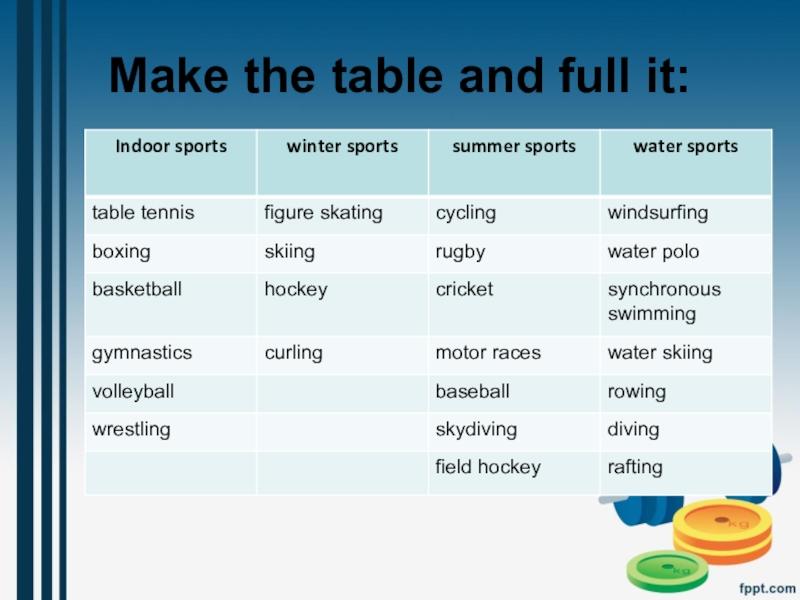
Once you’ve determined a baseline length, consider adjusting up or down. Going longer boosts reach and power but reduces control. Shorter offers more maneuverability at the expense of range.
Here are some key pros of sizing up or down:
Longer Stick Pros:
- Wider ball protection radius
- Ability to control more ground
- Added poke check reach
- More throwing leverage and power
Shorter Stick Pros:
- Faster handling and release
- Easier stick tricks and maneuvers
- Tighter passing lanes
- More control on catches and draws
Test both ends of the spectrum to find your optimal balance of length, leverage, and control. Don’t be afraid to experiment – quarter-inch changes can make a surprising difference.
Dialing in Your Ideal Lacrosse Stick Length
Finding your perfect length takes trial-and-error, but getting it right is critical. Give multiple shaft lengths a test drive during shooting, passing, and live play. Feel the differences in quickness, vision, power and precision.
You may need to tweak length up or down as you hone skills, gain size and strength, or switch positions. Don’t settle on one length forever – update as your game evolves.
A stick that complements your frame, skills, and role on the team gives you the control and confidence to own the field. Take time to dial in the right length and handle, then unleash your full lacrosse potential.
Stick Brands – Overview of top brands like Maverik, STX, Warrior.
Upgrading your lacrosse stick is one of the best ways to elevate your game. With so many head and shaft options out there, narrowing down your choice can be overwhelming. One of the best places to start is looking at the top stick brands on the market.
Powerhouses like Maverik, STX, and Warrior dominate the lacrosse gear scene, but upstarts like Alpha Lacrosse and StringKing are shaking things up. Each brand has their strengths and weaknesses in terms of performance, style, and price point.
Let’s break down the key players to help you find your perfect setup this season.
Maverik
Maverik is one of the staples in lacrosse, known for advanced engineering and bold style. Founded by former Syracuse star Paul Gait, Maverik focuses on high-end gear for elite players.
Top selling sticks include the Tactik head with its pinched scoop and the Union Attack shaft with textured grip. Newer models like the CEO U and Proton U push the innovation envelope.
Maverik sticks offer crisp throwing and checking, paired with excellent durability. The trend-setting style resonates with top high school and college players. The premium quality comes at a cost, making Maverik one of the pricier options.
STX
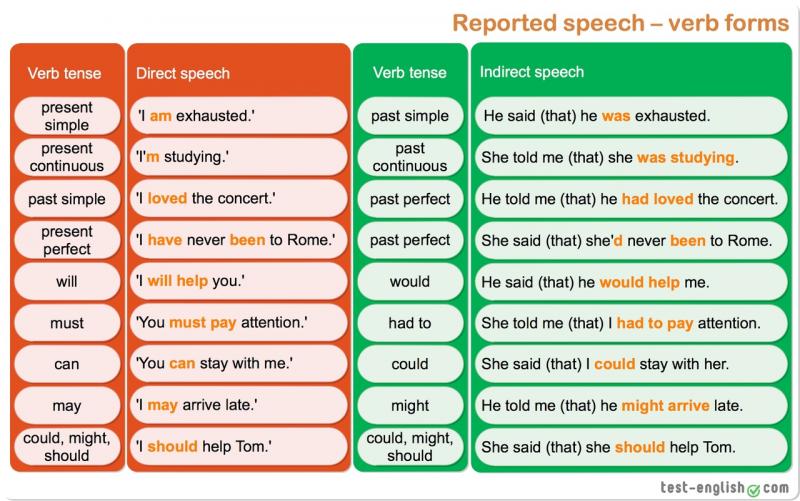
STX is another industry leader, with roots tracing back to 1970s Baltimore. While Maverik trends flashy, STX sticks take a more minimalist, performance-driven approach.
Best sellers include the Stallion 500 head known for its quick release and the Sci-Ti Pro shaft featuring nano-ceramic coating. The new Surgeon line offers an elite fit and feel.
Overall, STX sticks provide technical excellence at a more accessible price point than some competitors. The classic style and proven consistency make them a can’t miss option.
Warrior
Known for tough, hard-nosed gear, Warrior is popular with defensive and midfield grinders. Backed by New Balance, Warrior leverages performance insights from across sports.
Leading sticks include the burn FO head for faceoff domination and the Burn Pro defense shaft with tactile kick points. New technologies like Carbon Pro aim to increase durability.
Warrior sticks maybe aren’t the flashiest, but provide rugged dependability for physical two-way play. The affordable pricing makes Warrior a go-to for players wanting bang for their buck.
StringKing

Founded in 2014, upstart StringKing shook up the market with direct-to-consumer pricing and customizability. Started by ex-Johns Hopkins stars, StringKing sticks deliver pro-level quality without the markup.
The á la carte approach lets you build sticks to your exact specs and stringing. Popular heads include the Mark 2V and FoCo face-off model. Shafts like the Metal 2 Pro offer premium materials at a discount.
For lacrosse players seeking high performance and customization without big budgets, StringKing brings a refreshing disruptor mentality.
Alpha Lacrosse
The newest brand on the block, Alpha Lacrosse was founded in 2018 by former Yale and MLL stars. Alpha’s signature modular stick system enables unrivaled adjustability and experimentation.
Interchangeable heads like the Command X match with customizable shafts like the Trace. Swapping components allows you to tune weight, flex, and balance on the fly.
For athletes obsessed with finding their perfect feel and fit, Alpha Lacrosse delivers constant optimization. The startup innovation and flexibility make them one to watch.
Finding Your Ideal Setup
While brand provides a starting point, don’t forget to consider factors like head shape, shaft material, flex profile, and stringing style for your position and playing style. Test sticks to find the right blend of hold, release, control, and power.
Elite players mix and match heads and shafts across brands to build their dream sticks. Don’t limit yourself – find the right components for you.
At the end of the day, your skills and talent matter far more than any brand name. Whichever stick brings out your best is the perfect one. Use your equipment, don’t let it use you!
Budget vs Premium Sticks – Comparison of lower cost vs high end sticks.
Upgrading your lacrosse stick is the fastest way to step up your game. With sticks ranging from $50 to $300+, should you go budget-friendly or all-out premium? Let’s break down what you get at both ends of the pricing spectrum.
Budget lacrosse sticks offer solid performance at an accessible price point for new and casual players. Premium sticks provide cutting-edge materials, engineering, and customization to help experienced athletes reach the next level.
Finding the right balance for your skill level, budget, and goals is key. Here’s an overview of what to expect from budget and premium stick tiers:
Budget Sticks

Sticks in the $50 to $150 range deliver very capable performance, especially for recreational play. Major brands like STX, Maverik, and Warrior all offer budget models aimed at new players.
Budget shafts typically use alloy metals like aluminum, which reduces weight. Budget heads often feature injected polymer plastics versus higher grade composites. Pockets and stringing kits hit entry-level quality and customization.
While budget gear lacks some frills, it allows players to get started without a huge investment. Solid fundamentals can still be developed with basic alloy and polymer sticks.
Premium Sticks
Stepping up to sticks in the $200 to $300+ tier provides high-end materials, quality craftsmanship, and custom options galore.
Premium alloy shafts use aircraft metals or add carbon fiber for light yet stiff performance. Heads feature cutting edge plastics and composites for strength and ball response. Custom stringing kits allow for truly personalized pocket dialing.
This elite tier gear gives experienced players every advantage. Lighter sticks improve control and handling. Advanced engineering enhances power and touch. Personal customization optimizes feel across all facets of the game.
Key Differences
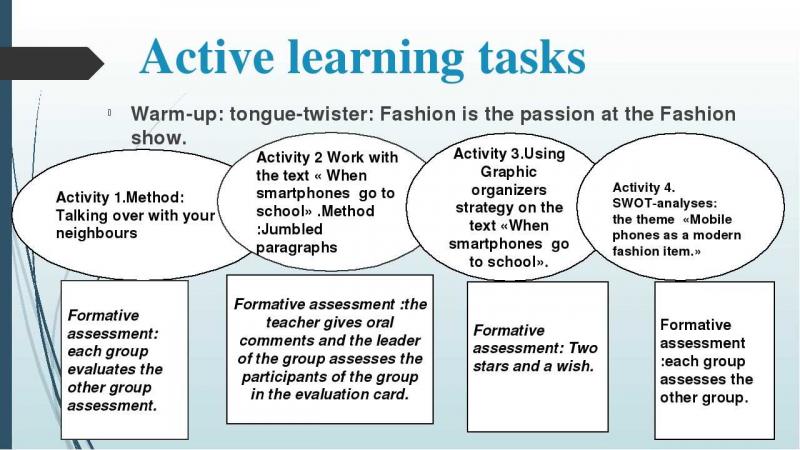
Beyond materials used, here are some of the biggest differences between budget and premium tiers:
- Durability – Premium sticks last longer under heavy use
- Consistency – Premium provides reliable performance year to year
- Weight – Premium sticks offer exceptionally light yet stiff builds
- Customization – Premium allows full personalization of flex, balance, stringing, grip, and more
- Precision – Premium sticks offer more exacting performance for passing, shooting, scooping
- Style – Premium sticks allow players to stand out and look sharp on the field
When to Go Premium
Here are signs it may be time to upgrade from budget to premium sticks:
- You’re playing at competitive high school level or higher
- Lacrosse is your primary sport
- You practice and play very frequently (3+ times per week)
- You want to reach the next skill level in passing, shooting, handling
- You are rough on gear and need maximum durability
- You want full customization of your stick
Investing in premium equipment makes the most impact once fundamentals are established and you are ready to unlock new levels of performance.
Find the Stick Tier That’s Right For You
While premium sticks offer enticing benefits, budget options provide plenty of quality if you are new, young, or on a tight budget. Focus first on developing skills with any stick before worrying about elite gear.
Ultimately, find the balance of performance and value that fits your needs. Skill beats gear every time, so get the stick that boosts your confidence and helps you have the most fun!
Stick Maintenance – Keeping your stick in top playing condition.
You dropped big bucks on your new dream stick. Don’t let your investment go to waste – take time for proper maintenance. Keeping your stick in peak condition optimizes performance and extends its lifespan. Here are the top stick care tips:
Inspect Frequently
Develop a habit of regularly inspecting your head and shaft before and after use. Check for cracks, dents, loosening, and excessive wear. Catching issues early allows for quick fixes.
Pay close attention to the scoop, sidewalls, and throat of the head where damage often occurs. Check the entire shaft for dings that impact structural integrity.
Replace When Needed
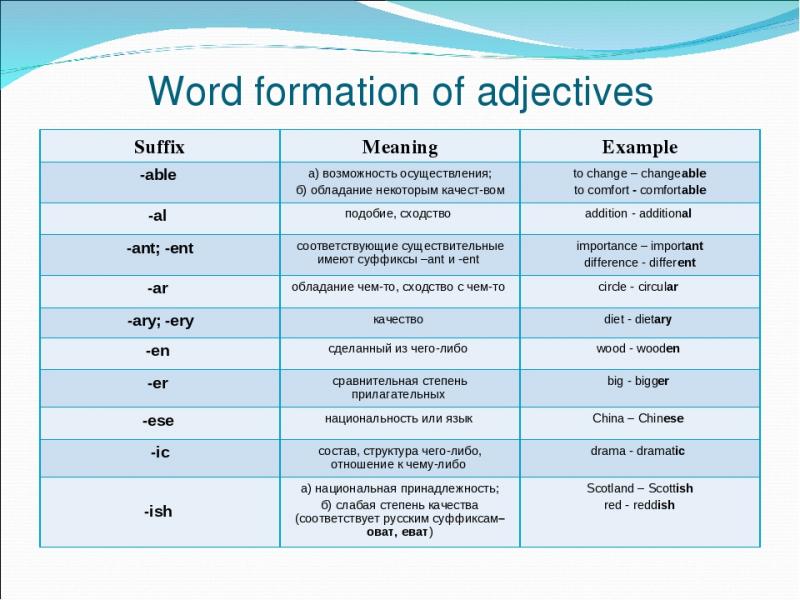
Don’t try to overextend a damaged stick. Significant cracks, holes, or bends call for replacement. Use sticks until they fail inspection, then swap in fresh gear.
Having backup sticks ensures you can seamlessly transition when your gamer finally gives out after seasons of loyal use.
Keep Pocket Fresh
Monitor pocket wear and adjust stringing when the bag gets too loose or tight. Carry a restringing kit for quick adjustments on the fly. Deep clean mesh and leathers periodically.
Store sticks with the pocket face down to avoid deformation from hanging weight. Keep strings free of dirt and debris that abrade fibers.
Clean Thoroughly
Dirt, mud, and grime are stick assassins. Rinse heads and shafts after each use to wash away field debris and perspiration residue.
For deep cleans, use mild soap and a soft brush to gently lather and scrub. Rinse fully with clean water and dry completely.
Store Safely
Protect idle sticks from curb stops, door jambs, and other hazards. Avoid leaving gear in hot cars or garages where temperature extremes weaken materials.
Invest in sturdy stick bags for secure transport. Hang or rack store sticks at home using padded hooks to prevent paint chips and dings.
Weatherproof When Needed
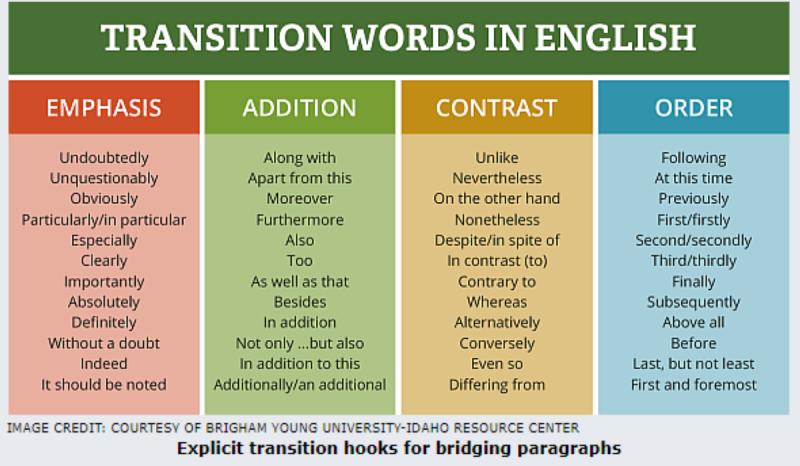
For cold weather play, seal shaft and head gaps with waterproof tape to prevent ice buildup and snow packing. Pack foam in pockets to retain shape.
Use stick wax or sports sealant to protect shafts and heads from moisture. Reapply as needed after heavy rains and snow melt take their toll.
Consider Covers
When storing sticks long term or traveling far, head and shaft protectors add an extra layer of safety. They shield your sticks from bag wear and prevent poking holes in car seats!
Extend Your Stick’s Life
Applying regular TLC keeps your stick primed for peak performance and less prone to breakdowns. Take time after each use for inspection and cleaning – better to catch issues immediately before they worsen.
With some diligence and common sense care, you’ll enjoy seasons of loyal service from your favorite head and shaft combo. Don’t cut that lifespan short through neglect. Your stick will repay careful maintenance with better ball control, crisper passing, and more powerful shots throughout its tenure. Game on!
Finding the Right Stick – Putting it all together to choose the ideal stick.
With so many stick options on the market, making the right choice can be daunting. But evaluating your preferences and needs will guide you to lacrosse gear that brings out your best.
Assess factors like position, skill level, personal style, and budget. Prioritize features that align with your strengths and help improve upon your weaknesses.
Finding your perfect match takes trial and error. Expect to experiment with different setups over time. Tweak what works and move on from what doesn’t. Here are some tips for narrowing down your search:
Consider Your Position First
Attackmen need quick release sticks optimized for tight quarters play near the crease. Defenders rely on longer poles for disruption and range. Determine ideal length, scoop shape, stiffness and other specs based on the role you play.
Focus on Your Strengths and Weaknesses
If quick sticks are a must, prioritize fast throating heads and quick release stringing. If you struggle scooping ground balls, find heads that excel at clean pickup. Address your personal pain points.
Think About Your Style of Play
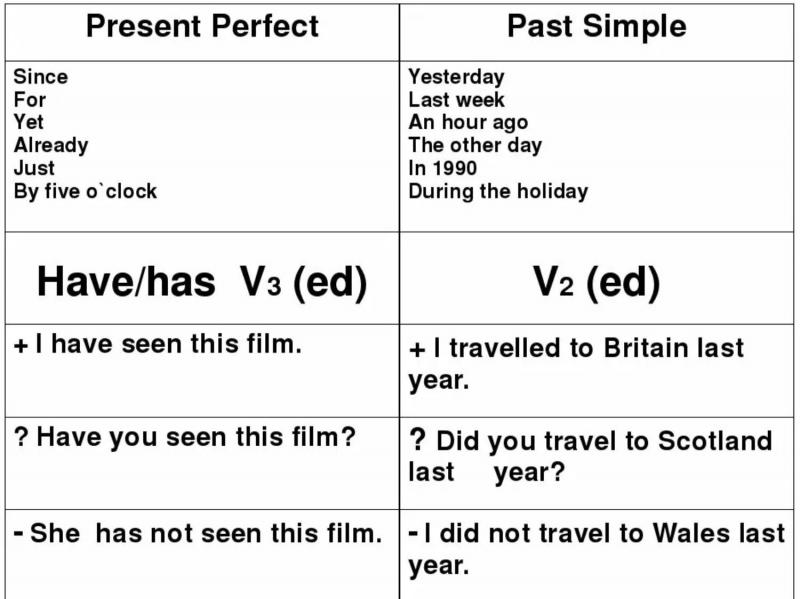
Aggressive slashers need durability above all else. Finesse players require exceptional handling and touch. Find what best aligns with your athletic profile and go-to moves.
Consider Materials and Flex Profiles
Softer, more flexible sticks offer cushy control for newcomers. Intermediate and advanced players need stiffer sticks for more positive feedback and efficient energy transfer.
Don’t Overlook Aesthetics
While performance matters most, lacrosse is also about looking and feeling sharp. Pick heads and shafts with style and attitude that match your personal flair.
Think Modularity for Adjustability
Mix-and-match modular stick systems allow you to customize flex, balance, and more. Easily swap components until you assemble your ideal setup.
Get the Right Stringing
Dial in pocket stringing tailored for your handling style and release preferences. Focus on ideal hold, channel depth, ball control, and throw speed.
Factor in Budget
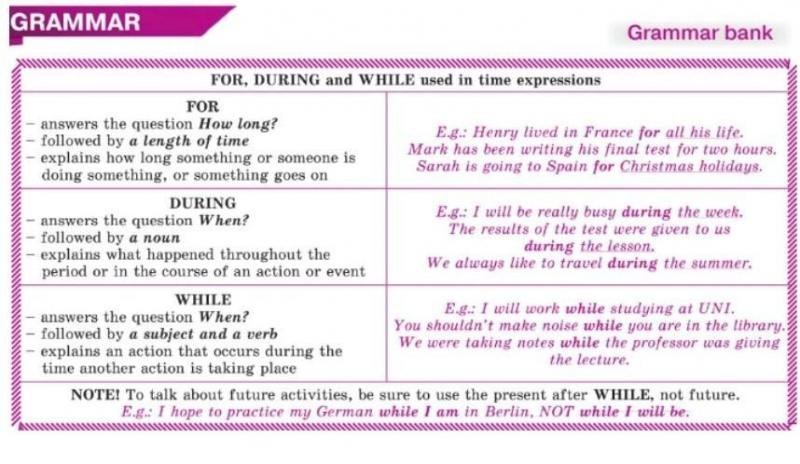
Set a realistic budget and find the best stick possible within it. Premium gear brings incremental performance gains but solid sticks can be had at every price point.
Test, Learn, Repeat
Don’t get overwhelmed with analysis paralysis. Eventually you’ve gotta pick a stick and get out on the field! Pay attention to what works for you versus what doesn’t during gameplay. Keep what excels and change what falls short.
Be open to new brands, materials, and designs. You never know when an underdog will become your new go-to. Seek continuous improvement over time as your skills progress.
Trust your instincts – when the right stick comes along, it just feels right. Have fun with the search until you find your extension on the field. Then get out there and take your game to the next level!
Transform Your Game – Conclusion on how the right stick can elevate your play
Looking to Amp Up Your Lacrosse Game This Season? Learn How the Right Stick Can Take You to the Next Level
Whether you’re a seasoned lacrosse veteran or just getting started, having the right stick can make all the difference in your performance on the field. The key is finding a lacrosse stick that complements your playing style and helps take your skills to the next level. With so many options on the market, it can be tricky to know where to start. That’s where we come in.
In this article, we’ll walk you through the key factors to consider when choosing a new lacrosse stick. We’ll look at the differences between attack, midfield, and defense sticks and the most important features to focus on for your position. We’ll also recommend some of the top lacrosse stick brands and models on the market right now based on skill level and position. By the end, you’ll have all the info you need to find your perfect match!
Picking the Right Stick Based on Position
The first step is deciding what type of lacrosse stick you need. Lacrosse sticks come in three main types – attack, midfield, and defense. Each is designed with specialized features to match the requirements of that position.
Attack sticks are optimized for quick passing and shooting in tight spaces near the goal. They have narrower heads which allow for greater control and accuracy on shots, scoops, and feeds. A low pocket helps cradling and ball retention while dodging defenders. These sticks also tend to be lighter to enable quick stick work.
Midfield sticks are the most well-rounded option. As midfielders transition between offense and defense, a versatile stick is needed. Middie sticks have wider heads for catching errant passes, a medium pocket depth for carrying upfield, and moderate weight for balance. Flexibility is the name of the game.
Defense sticks prioritize checks, scoops, and outlet passes. They have wide heads for snagging ground balls and stopping shots paired with a deep pocket to securely cradle the ball. These sticks are heavier to enable big checks. Durability and control reign supreme.
While these guidelines provide a useful starting point, also consider your personal playing style. For example, some midfielders may opt for more of an attack-style stick if they tend to push transition and score goals. Work with your coach to choose the right general stick type and then fine-tune from there.
Dialing in the Perfect Stick Specs

Once you’ve selected the right category of stick, it’s time to dial in the specifications. The three main factors to focus on are head design, shaft material/flex, and pocket type. Let’s break it down.
First, the head shape and size should align with your position as described above. Attack heads are generally more pinched and pointed for shots while defense heads are wider for checks and scoops. Midfield heads strike a balance. The sidewall design also affects stiffness and ball control – open sidewalls are more flexible while closed sidewalls are stiffer.
Second, the shaft material and flex should match your playing style. Beginners often benefit from a more flexible shaft for increased whip on passes and shots. As you advance, a stiffer shaft offers more control once you develop good form. Common shaft materials are titanium, aluminum, composite, and carbon fiber – each providing a different weight and flex profile. Length is another big factor, typically 40-46 inches from youth to high school levels.
Lastly, pay close attention to the pocket type you choose. This can drastically impact feel during cradling, scooping, passing, and shooting. In general, a deeper pocket improves ball retention while a shallow pocket enhances control and release. Consider testing out mesh, traditional leather, or synthetic leather to see what you like best. Pocket placement and width are also key tuning factors.
Don’t be afraid to experiment here with different head/shaft/pocket combinations until you find your go-to setup. Comfort and confidence in your stick is critical.
Brands and Models to Look For

Now for the fun part – time to shop! When researching specific lacrosse stick models, you’ll see the same major brands pop up time and again. Maverik, STX, Warrior, Alpha Lacrosse, Brine, and Nike dominate the field. While personal preference goes a long way, here are some great options to consider based on skill level:
Beginner: Alpha Lacrosse Outlaw, Maverik Charger, STX Stallion 50
Intermediate: Warrior Evo Warp, Brine King 4, Nike Vapor Elite
Advanced: Maverik Kinetik, STX Hammer, Alpha Lacrosse Maverick
The Alpha Lacrosse Outlaw is a top choice for new players thanks to its forgiving head design, entry-level alloy shaft, and focus on durability. As skills progress, the Warrior Evo Warp offers increased finesse with its aerospace grade shaft, AccuShape head, and performance mesh pocket. Once ready for a pro-level stick, the Maverik Kinetik checks all the boxes with carbon construction, customized balance points, and tested accuracy.
While stick technology and new models are always advancing, core brands like Alpha Lacrosse, Maverik, and STX have remained trusted industry leaders for good reason. Their ongoing innovation and consistency make them safe bets year after year.
Transform Your Game – Conclusion on how the right stick can elevate your play
When crafted with care, a lacrosse stick becomes an extension of your arm rather than just a piece of sporting equipment. The right stick improves skills, unlocks potential, and boosts confidence. By taking the time to dial in a setup tailored to your position and playing style, you give yourself the best chance to perform at a higher level.
While raw talent goes a long way, the tools you choose can help take your game to the next level. Use the guidance above to zero in on a head, shaft, and pocket combo that clicks. Experiment, test, and tune until you have a stick you love playing with. Then get out on the field and see the results for yourself. Just remember, the stick doesn’t make the player – but it certainly can help transform good players into great ones.